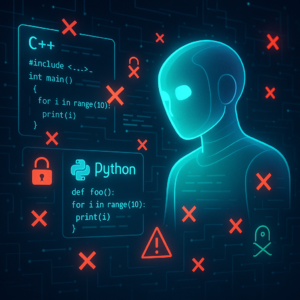Unmasking the Machines: Detecting AI-Written Text in Education and Beyond

Unmasking the Machines: Detecting AI-Written Text in Education and Beyond
In today’s tech-savvy world, the line between human and machine writing can be a bit blurry. The skyrocketing use of AI models like ChatGPT has transformed how we generate text. These models are showing up in everything from marketing copy to academic essays. But with great power comes great responsibility, and the question of authenticity is more pressing than ever. How can educators ensure academic integrity in a world where text may or may not have been penned by an actual human being? Fortunately, a group of researchers has come up with an innovative approach to tackle this issue using machine learning and Explainable AI. Let’s dig into their findings and see what this could mean for the future of education—and beyond.
A Brave New World of Text
Generative AI models like ChatGPT have taken the world by storm. They can write like humans, respond to queries, and even create art. While these models have revolutionized industries, they also pose risks, including the potential for misinformation and plagiarism. The necessity of distinguishing AI-generated text from human-written text in sectors like education can’t be overstated. With students increasingly using these tools to write papers, educators are keen to find reliable ways to verify authorship and maintain academic standards.
A Deep Dive into the Research
A team of researchers, Ayat A. Najjar and colleagues, set out to solve this very issue. Their study revolved around developing a machine learning model capable of distinguishing between AI-generated text and human-written content—specifically in the realm of cybersecurity documentation.
The CyberHumanAI Dataset
The team created a dataset called CyberHumanAI, consisting of 1,000 cybersecurity paragraphs—half written by humans, and the other half generated by ChatGPT. This dataset served as the foundation for training various machine learning models to spot the tell-tale signs of AI writing. To ensure the dataset’s quality, meticulous preprocessing was performed, including removing stop words and punctuation to keep the dataset clean and ready for analysis.
Machine Learning Magic
Several algorithms were tested on the dataset, such as Random Forest, XGBoost, and Support Vector Machines (SVMs). Spoiler alert: XGBoost and Random Forest proved to be rockstars, achieving impressive accuracy rates of 83% and 81% respectively in distinguishing AI-generated text from human-written text. For the uninitiated, XGBoost is like the overachieving student in school. It’s fast, efficient, and great at learning from data to make accurate predictions.
The AI Vocabulary
Interestingly, the study found that human authors tend to use more practical and action-oriented language like “use” and “allow,” while AI prefers more formal and abstract words like “realm” and “employ.” By identifying these differences, the models could effectively sort content based on its origin—whether human or machine.
Keeping It Transparent with Explainable AI
The real stroke of genius here was incorporating Explainable AI (XAI) to make these models more transparent. The team used a method called LIME (Local Interpretable Model-agnostic Explanations) to shed light on why the model made its decisions. Imagine if your calculator could explain why two plus two equals four in words. That’s what LIME does for AI—it shows which elements of the text were most influential in the decision-making process.
Real-World Applications and Implications
The implications of this study stretch far beyond the classroom. In academia, reliable detection tools can help maintain academic integrity and ensure fair assessment. Businesses, notably those using AI for customer service or automated reporting, can apply similar models to verify the accuracy and trustworthiness of AI-generated materials before they reach customers. Even the media could use such technology to check the authenticity of news articles and prevent the spread of AI-driven misinformation.
The Battle of AIs: Our Model vs. GPTZero
The study didn’t stop at just building a model—it also put it head-to-head against GPTZero, a commercial tool that tackles similar challenges. The research team’s model outperformed GPTZero, achieving a balanced accuracy of 77.5% compared to GPTZero’s 48.5%. It excelled particularly in cases where texts were a mix of AI and human input, highlighting the benefits of a specialized, fine-tuned approach.
Key Takeaways
- Technology’s Double-Edged Sword: AI models like ChatGPT are fantastic tools, but they raise valid concerns about authenticity, especially in educational settings.
- CyberHumanAI Dataset: The researchers have crafted a unique dataset to help differentiate AI-generated text from human-written content using various algorithms.
- Machine Learning Heroes: XGBoost and Random Forest performed exceptionally well, demonstrating their ability to spot AI-written text accurately.
- Explainable AI Magic: Techniques like LIME provide much-needed transparency, making AI models’ decisions easier for humans to understand.
- Real-World Impact: These findings could revolutionize not just education but also sectors like media and business by maintaining the integrity of AI-generated content.
- The Specialized Approach Wins: Tailoring AI models for specific tasks can outperform generalized systems, as shown in the model’s superior performance over GPTZero.
By adopting such advanced methods, we can harness AI’s potential while safeguarding transparency and integrity. Whether you’re an educator striving to uphold academic honesty, a business executive ensuring the reliability of automated content, or just a curious reader, these insights give you a peek into the exciting, complex, and sometimes challenging world of AI-authored text.
In the ever-evolving dance between humans and machines, having the right tools can ensure everyone stays in step. So, whether it’s a student essay or a cybersecurity report, you’ll know just who—or what—wrote it.
If you are looking to improve your prompting skills and haven’t already, check out our free Advanced Prompt Engineering course.
This blog post is based on the research article “Detecting AI-Generated Text in Educational Content: Leveraging Machine Learning and Explainable AI for Academic Integrity” by Authors: Ayat A. Najjar, Huthaifa I. Ashqar, Omar A. Darwish, Eman Hammad. You can find the original article here.




